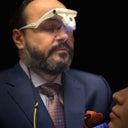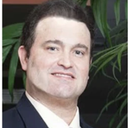Posted underPRP for Hair Loss q&a
Can PRP make your hair worse? I am a 25 female with androgenetic alopecia.
I started prp 3 months ago and have had two sessions so far will have my third soon. My shedding has decreased I went from shedding 200 hairs a day to 64 hairs a day. Im so happy the shedding has stopped. However my hair looks thinner and my crown looks worse than when I started PRP my back hair is also falling off. My hair looks completely flat. Can I ever regrow hair?
Answers (12)
From board-certified doctors and trusted medical professionals

Dr. Jeff Rapaport, MD
Dermatologic Surgeon, Board Certified in Dermatology
Answer
Dr. Joyce Davis, MD
Dermatologic Surgeon, Board Certified in Dermatology
Answer
Dr. Ashley R. Curtis, MD
Dermatologic Surgeon, Board Certified in Dermatology
Answer
More PRP for Hair Loss Questions
See all PRP for Hair Loss Q&AWE SEND PRETTY
EMAILS
What’s trending? Who’s turning heads? Which TikTok myths need busting? We’ve got you. No fluff, no gatekeeping—just real talk. Get our free, unfiltered newsletter.



